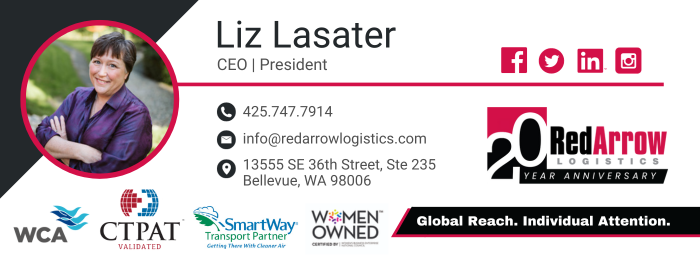In the fast-paced world of logistics, the final mile represents the last crucial stretch of a product’s journey from the distribution center to the end customer’s doorstep. This stage is often the most challenging and complex, requiring careful planning and execution to ensure customer satisfaction. At Red Arrow Logistics, we understand the significance of a well-designed final mile logistics strategy.
In this article, we present a comprehensive 4-step guide to help you set up a final mile logistics strategy that not only meets but exceeds customer expectations.
Step 1: Understand Your Customer’s Needs and Expectations
The foundation of a successful final mile logistics strategy lies in a deep understanding of your customer’s needs and expectations. Different industries and products have unique requirements, and tailoring your approach to meet these specifics is crucial. Conduct market research, gather customer feedback, and analyze historical data to identify patterns and preferences. Consider factors such as delivery time windows, real-time tracking options, and communication preferences. By knowing your customer intimately, you can tailor your final mile logistics strategy to create a seamless and satisfying experience.
Step 2: Leverage Technology for Efficiency
In the digital age, technology plays a pivotal role in enhancing the efficiency of final mile logistics. Implementing advanced tracking systems, route optimization software, and real-time communication tools can significantly streamline operations. Utilize data analytics to identify bottlenecks and areas for improvement. Automated notifications and updates keep customers informed about the status of their deliveries, fostering transparency and trust. By embracing technology, you not only improve operational efficiency but also elevate the overall customer experience.
Step 3: Optimize Last-Mile Delivery Routes
One of the biggest challenges in final mile logistics is optimizing delivery routes to minimize costs and maximize efficiency. Consider factors such as traffic patterns, delivery windows, and the proximity of multiple deliveries. Route optimization software can help you create the most efficient routes, reducing fuel costs and delivery times. Additionally, explore alternative delivery methods, such as crowdsourced delivery or partnerships with local carriers, to expand your reach and enhance flexibility.
Step 4: Prioritize Communication and Customer Service
Effective communication is paramount in final mile logistics. Keep customers informed about their delivery status through regular updates and notifications. Provide accurate delivery time estimates and, if possible, real-time tracking options. In case of any delays or issues, proactive communication can help manage expectations and prevent customer dissatisfaction. Additionally, invest in a responsive customer service team capable of addressing queries and concerns promptly. A positive and helpful customer service experience can turn a potential issue into an opportunity to build trust and loyalty.
Setting up a final mile logistics strategy that delivers requires a holistic approach that considers the unique needs of your customers, leverages cutting-edge technology, optimizes delivery routes, and prioritizes communication and customer service. By following this 4-step guide, businesses can enhance their final mile logistics capabilities, exceed customer expectations, and stay competitive in an ever-evolving market.
Your Trusted Partner
At Red Arrow Logistics, we are committed to helping our clients navigate the challenges of final mile logistics, ensuring a seamless and satisfying experience for both businesses and their customers.
Red Arrow offers the scale and scope of services including air, ocean, and ground transportation to meet the budget and schedule requirements of the largest and smallest companies alike. If we can be of assistance, please email us at info@redarrowlogistics.com or give us a call at 425-747-7914.





